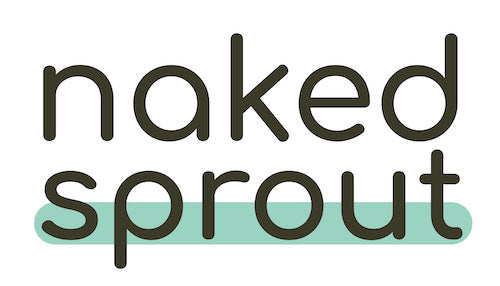How Does Toilet Paper Dissolve in Water?

When it comes to toilet rolls, there are a few essential qualities most of us are looking for. Softness is a plus, sheet-count is important, and then there’s the all important issue of strength.
At Naked Sprout we get a lot of questions about toilet rolls, and questions about strength tend to run in two directions. Firstly, there are people who want to make sure the toilet roll is strong enough to sustain the pressure of the task in hand, so to speak! And then there’s the more common question, do our bamboo and recycled rolls, which are made without bleach, using renewable energy, and look quite different from standard products, break down in toilets and sewer systems like standard products?
In other words, people want their rolls strong, but not too strong. So we have a bit of a balancing act on our hands!
Today we’re getting into the details of how toilet rolls are strength tested, and how they disintegrate in water. Newton Meters at the ready? Let’s break it down.

1. Tissue Testing
Here’s a little test you can try - take a piece of printer paper (or newspaper, or magazine paper, or wrapping) and try very gently to tear it, using the least amount of pressure possible. Now do the same with a sheet of toilet tissue.
Hopefully, you’ve noticed a difference. Toilet tissue is made to break down under less force than most other types of paper, but it still needs to hold up enough that it doesn’t fall apart in your hands while you’re using it.
Now wet the paper. You should find this makes it far easier to tear, the fibres in the paper will ease apart with just a tiny bit of pressure.
This is all by design. The materials used to make toilet tissue are chosen for their ability to dissolve. Toilet roll manufacturers chose a pulp with short, highly absorbent cellulose fibres that will retain strength when dry but start to unravel and lose cohesion once wet.
The master paper makers at our wonderful B Corp factory in Spain test each batch of toilet roll to make sure it’s falling in the standard industry norms for toilet roll strength. We make toilet tissue that will withstand around 74 N/m dry, and 0 N/m when wet.
So our toilet rolls have been tested to make sure it can break down. But how exactly does the breaking down happen? It’s time for your plumbing to shine!

With every flush of your loo you're activating a carefully designed hydraulic system made to transport waste efficiently. The design and force of the flush play pivotal roles in breaking down toilet tissue.
Most standard toilets in UK homes use gravity-flush systems. A tank above the toilet bowl holds water that is released when it’s flushed. The added water pushes everything from the bowl into the soil pipe, ready to go into the sewers (more on that later).
Pressure-assisted toilets, on the other hand, which you will find in many large commercial buildings and offices, use pressurised air to boost flushing power. This is especially useful in places like cinemas or concert venues, where toilets can be used much more frequently and more robust flushing is needed.
Either way, the initial burst of water and the subsequent swirling action help pull the tissue away from the bowl and into the soil pipe. This water flow isn't just moving the tissue; it also begins the disintegration process by saturating the paper, starting that process of encouraging the paper to break apart.
From the soil pipe the softened paper makes its way to its next glamorous destination, the sewer system.

3. Into the Sewers
When it gets to the sewers, the process of breaking down continues.
As the tissue travels through different parts of the system, it encounters varying flow rates and turbulence levels, which encourages more disintegration. And sewer systems are not just passive tubes; they are active bioreactors. Microorganisms living in the nutrient-rich environment of sewers, can feast on biodegradable materials like toilet tissue. These microorganisms play a significant role in decomposing the tissue.
By now, the tissue is likely to be thoroughly broken down into small particles which have mixed with other solid matter in the system (no prizes for guessing what that is!), forming “sludge,” a semi-solid material that is eventually processed at wastewater treatment plants.

Final Processing
The finish line comes in the form of the water treatment works. Here, sludge is processed to remove contaminants before it can be recycled or disposed of. The treatment process typically involves allowing the sludge to settle in large tanks where heavier solids descend to the bottom. This sediment, including what was once toilet tissue, undergoes further microbial digestion, which reduces its volume and breaks down any remaining organic material.
Finally, the treated water is separated from the sludge and subjected to additional purification processes before being released back into waterways. The remaining sewerage sludge is rich in nutrients like nitrogen and phosphorous, and it can be repurposed by farmers as fertiliser to improve soil, and the process of refining it produces methane, a biofuel which can be used as a source of renewable energy. We use biomethane in our own furnaces at our factory in Spain, but ours comes from sheep, not people. Same principle though!

Wrapping Up
From our testing at the factory to your flush at home, all the way through the complex sewerage systems to wastewater treatment plants, toilet tissue is designed to disappear efficiently and effectively. This process not only helps keep our plumbing clear but can also feed into circular systems providing energy and fertiliser. Next time you flush, you'll know the journey that simple piece of loo roll is about to go on!
Want to try our unbleached, environmentally friendly, toilet rolls before they reach their final destination?




